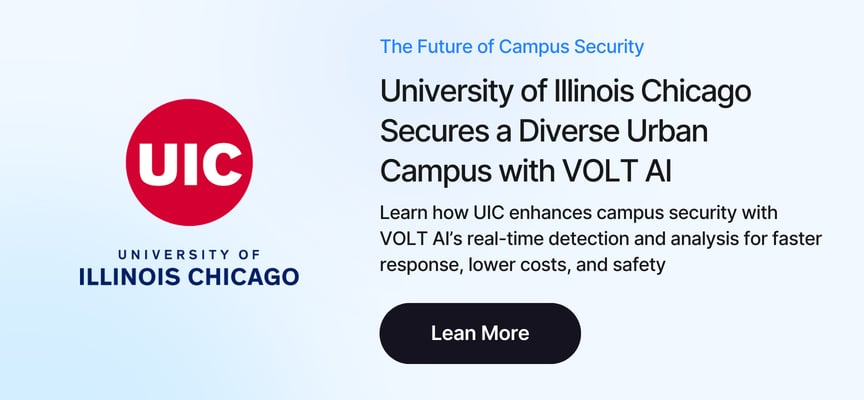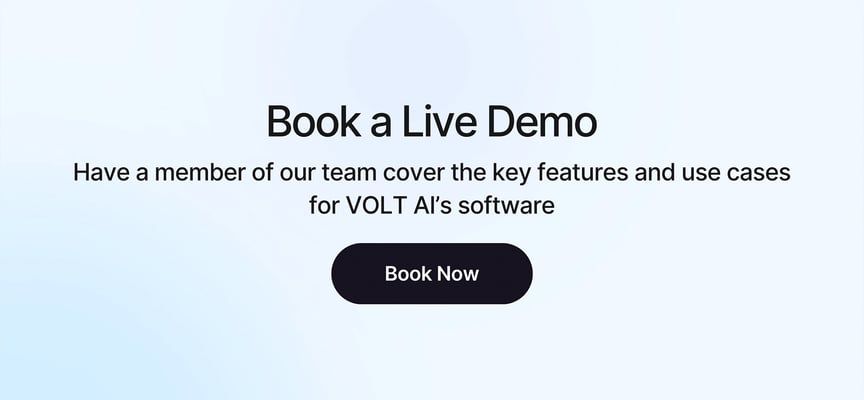Key Points
- Third-party security costs: Traditional security services can reach $2-3 million annually for large campuses, with reliability issues including staff sleeping on duty or failing to show up
- AI system efficiency: Modern AI-powered video intelligence can monitor 100% of camera feeds 24/7, compared to less than 5% coverage with human monitoring
- Cost per stream advantage: AI solutions typically cost around $60 per camera stream monthly, providing comprehensive monitoring at a fraction of traditional security costs
- Force multiplication effect: AI systems transform limited security personnel into highly effective teams with real-time intelligence and automated threat detection
- Measurable ROI factors: Reduced third-party security dependence, eliminated investigation time, prevented theft, and improved emergency response times create quantifiable returns
The True Cost of Campus Security: Beyond Initial Price Tags
Campus security leaders face mounting pressure to enhance safety while managing increasingly tight budgets. Traditional approaches of hiring more security personnel or expanding third-party contracts often create unsustainable cost structures that can reach millions annually for large institutions.
Universities and colleges nationwide are discovering that comprehensive campus security doesn't require massive personnel increases. Instead, smart technology investments can multiply the effectiveness of existing teams while reducing long-term operational costs. Understanding these cost dynamics is crucial for making informed security decisions that protect both students and institutional budgets.
The modern campus security landscape has evolved beyond traditional methods. Campus security spending exceeded $400 million annually by 2018, yet many institutions still struggle with coverage gaps and reliability issues. Smart administrators are now turning to AI-powered solutions that deliver superior results at lower operational costs.
🎓 Campus Security ROI Calculator
Compare your current security costs with AI-powered video intelligence. Keep in mind, this is just an estimate based on averages and does not constitute an official quote.
👥Current Security Setup
🤖AI System Configuration
Your Campus Security ROI Analysis
Current Annual Cost
AI-Powered Annual Cost
Annual Savings
Return on Investment
Ready to Transform Your Campus Security?
See how VOLT AI can deliver these savings for your institution with a personalized demo.
Schedule Your DemoTraditional Security Methods: The Hidden Cost Reality
Most campus security budgets face significant strain from traditional approaches that rely heavily on human resources. These conventional methods often create substantial ongoing expenses without delivering consistent results or comprehensive coverage.
Third-Party Security Services: The $236,000 Per Position Reality
Third-party security companies typically charge approximately $27 per hour per security officer for 24/7 coverage. This seemingly reasonable rate quickly compounds into substantial annual expenses when calculated across full-time equivalent positions.
For a single 24/7 security position, universities pay roughly $236,000 annually to third-party providers. Large campuses requiring multiple positions can easily reach $2-3 million in annual security service costs. These figures align with broader industry data showing that two-thirds of colleges have increased their public safety budgets in recent years.
Traditional Security Method | Annual Cost Range | Coverage Limitations | Reliability Issues |
Third-party security (per position) | $236,000 | Single location focus | Staff attendance problems |
School Resource Officers | $70,000-$100,000 | Limited campus mobility | Fixed location constraints |
Campus police expansion | $80,000-$120,000 per officer | Personnel availability | Staffing shortages |
Common Staffing Challenges Universities Face
Quality control presents significant challenges with contracted security services. Universities frequently experience several recurring problems that reduce the return on substantial security investments:
- Attendance issues: Guards sleeping during shifts or failing to appear for scheduled duties
- Coverage gaps: Inadequate coverage during critical periods when incidents are most likely
- Training inconsistencies: Variable skill levels among rotating third-party personnel
- Communication delays: Slow incident reporting through third-party management chains
Learn from real campus security leaders implementing AI solutions.
The Recruitment and Retention Crisis
Universities consistently struggle with security staffing challenges that extend beyond budget constraints. Even well-funded security departments face difficulties maintaining adequate coverage across expansive campuses with diverse security needs.
Traditional hiring approaches require extensive recruitment, training, and retention efforts. Security personnel turnover rates often exceed 50% annually, creating continuous recruitment costs and coverage gaps that compromise campus safety.
AI-Powered Video Intelligence: The Cost-Effective Alternative
Modern AI systems transform existing camera infrastructure into intelligent monitoring networks that provide comprehensive coverage at a fraction of traditional security costs. These systems operate continuously without fatigue, sick days, or staffing challenges that plague traditional approaches.
Per-Stream Economics: Breaking Down AI System Costs
AI-powered video intelligence typically costs around $60 per camera stream monthly, creating predictable operational expenses that scale with institutional needs. This pricing model allows universities to implement comprehensive monitoring across hundreds of cameras for less than the cost of a single full-time security position.
The per-stream approach provides exceptional flexibility for phased implementation. Universities can begin with high-priority areas and expand coverage based on results and budget availability, making it an ideal solution for institutions managing tight budgets.
Core AI System Capabilities
Modern AI security platforms deliver multiple detection capabilities that traditional monitoring cannot match:
- Weapon detection: Real-time identification of firearms and other weapons, even when partially concealed
- Fight detection: Automatic alerts when physical altercations begin, enabling rapid intervention
- Medical emergencies: Person-down detection for immediate medical response coordination
- Unauthorized access: Monitoring of restricted areas during off-hours to prevent theft and vandalism
- Equipment monitoring: Alerts for damage to parking gates, payment kiosks, and other campus infrastructure
Force Multiplication Through Intelligent Automation
AI systems don't replace security personnel but rather multiply their effectiveness through intelligent automation and real-time alerts. A single security officer equipped with AI-powered intelligence can monitor hundreds of camera streams simultaneously.
Real-time threat detection eliminates the guesswork and delayed response times associated with traditional monitoring approaches. Security teams receive immediate alerts with precise location data and visual confirmation of incidents requiring attention.
Real-World ROI Examples: University Success Stories
Universities implementing AI-powered video intelligence systems report substantial cost savings and operational improvements that justify initial investments within the first year of operation.
University of Illinois Chicago: Eliminating Third-Party Dependencies
UIC's implementation of AI-powered monitoring across 142 camera streams produced immediate cost savings by reducing third-party security dependence. The university cut contracted security positions by approximately 50% while maintaining superior coverage levels.
The system's reliability proved superior to human monitoring, with AI detecting incidents that traditional approaches missed entirely. UIC's security team now receives verified alerts rather than sorting through hundreds of false alarms or missed incidents.
Specific Cost Savings at UIC
Parking operations experienced particular benefits through automated incident detection:
- Equipment damage prevention: Real-time alerts for parking gate malfunctions prevent costly repairs
- Theft reduction: Automated monitoring of bike racks and scooter areas significantly reduced theft incidents
- Investigation efficiency: Incidents that previously required hours of manual video review now provide immediate evidence
- Response optimization: Security personnel deployment shifted from reactive patrols to targeted incident response
Maryville University: Transforming Limited Resources
Maryville University's security team of 11 officers gained the equivalent of 400 additional sets of eyes through AI implementation. This force multiplication effect provides real-time monitoring across 400 camera streams with existing personnel.
The system's ability to clear non-incidents remotely eliminates unnecessary officer dispatches and reduces investigation time. Security leadership can verify situations through AI-generated evidence rather than deploying personnel for every reported concern.
Calculating Your Campus Security ROI
Determining the return on investment for AI-powered security systems requires analysis of both direct cost savings and operational improvements that traditional approaches cannot deliver.
Direct Cost Comparison Framework
Cost Category | Traditional Approach | AI-Powered System | Annual Savings |
Personnel (per FTE) | $236,000 | $0 (force multiplier) | $236,000 |
Equipment monitoring | Manual inspection | Automated detection | $15,000-$30,000 |
Investigation time | 4-8 hours per incident | 15-30 minutes | $25,000-$50,000 |
False alarm response | $500-$1,000 per incident | Eliminated | $10,000-$25,000 |
Hidden Operational Costs to Consider
Traditional security approaches involve numerous hidden costs that AI systems eliminate:
- Overtime expenses: Coverage gaps requiring expensive overtime pay for existing staff
- Training costs: Continuous recruitment and training expenses due to high turnover rates
- Management overhead: Supervisor time spent coordinating third-party security contractors
- Equipment replacement: Theft and vandalism costs due to inadequate monitoring coverage
Quantifying Operational Efficiency Gains
AI systems generate value through operational improvements that traditional methods cannot achieve. These efficiency gains compound over time, creating substantial long-term returns on security investment.
Real-time incident detection eliminates the investigation time required to piece together events after they occur. Security teams receive immediate alerts with visual evidence and tracking data that would previously require hours of manual review.
Implementation Strategy: Maximizing ROI from Day One
Successful AI system implementation requires strategic planning that aligns technology deployment with institutional security priorities and budget constraints.
Phased Deployment Approach
Universities should begin with high-priority areas that generate immediate value and demonstrate system capabilities. Initial deployments of 30-50 camera streams provide sufficient scope for comprehensive testing while controlling implementation costs.
This pilot approach allows security teams to optimize system configuration before campus-wide expansion. Each subsequent phase can target specific stakeholder needs while building institutional confidence in the technology.
Essential Implementation Phases
Structured deployment ensures maximum value realization:
- Phase 1: High-traffic areas including main entrances, student centers, and parking facilities
- Phase 2: Residential areas focusing on dormitory entrances and common areas
- Phase 3: Athletic facilities and recreational areas with equipment protection priorities
- Phase 4: Academic buildings and specialized facilities requiring after-hours monitoring
Read our Complete Guide to AI-Powered Campus Security Systems.
Stakeholder Buy-In Strategies
Successful implementations require support from multiple university stakeholders beyond security leadership. Finance, facilities, IT, and academic administration all play roles in comprehensive security strategies.
Different stakeholders require tailored value propositions. Finance teams focus on total cost of ownership and measurable ROI metrics. Facilities management emphasizes equipment protection and maintenance cost reduction.
Advanced ROI Considerations
Beyond immediate cost savings, AI security systems provide strategic advantages that create long-term value for university operations.
Risk Mitigation and Liability Reduction
Comprehensive monitoring reduces institutional liability through better incident documentation and prevention capabilities. AI systems create detailed incident records that support legal proceedings and insurance claims.
Proactive threat detection prevents escalation of minor incidents into major security events. Early intervention saves costs associated with property damage, medical emergencies, and potential litigation.
Insurance and Compliance Benefits
Universities implementing comprehensive AI security systems often qualify for reduced insurance premiums. The enhanced monitoring capabilities demonstrate due diligence in risk management practices.
Compliance with safety regulations becomes more manageable through automated documentation and incident tracking. This reduces administrative overhead while ensuring regulatory adherence.
Long-Term Strategic Value
AI systems provide data analytics that inform future security planning and resource allocation decisions. Historical incident patterns help optimize staffing schedules and facility improvements.
The technology's scalability ensures continued value as campus security needs evolve. Universities can expand monitoring capabilities without proportional increases in personnel costs.
Visit the full resource center.
Making the Investment Decision: Your Next Steps
Campus security leaders should evaluate AI-powered video intelligence systems based on comprehensive cost-benefit analysis that includes both immediate savings and long-term strategic advantages.
Critical Assessment Areas
Thorough evaluation requires analysis across multiple dimensions:
- Current security spending: Detailed breakdown of personnel, contractor, and operational costs
- Coverage gaps: Identification of areas where traditional methods provide inadequate monitoring
- Incident patterns: Historical analysis of security events and response times
- Stakeholder priorities: Understanding of institutional security goals and constraints
Implementation Timeline Considerations
Universities implementing AI-powered security systems typically achieve positive ROI within 12-18 months through reduced personnel costs and operational efficiencies. The technology's scalability ensures continued value as campus security needs evolve.
Vendor selection should prioritize systems that integrate with existing infrastructure while providing comprehensive feature sets. Implementation planning requires phased deployment strategies that demonstrate value while managing costs.






